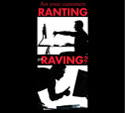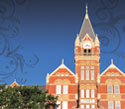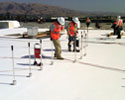NRCA seeks reform to an existing tax incentive designed to encourage the adoption of energy-efficient commercial roofing technology. This reform would help spur job growth in the construction industry, where the unemployment level remains well above the national rate.
An insufficient incentive
The incentive, "Energy Efficient Commercial Buildings Deduction" (Internal Revenue Code Section 179D), originally was enacted in 2005 to encourage commercial building owners to upgrade their lighting, HVAC and building envelope systems using more energy-efficient technology and materials.
As originally enacted, taxpayers were allowed deductions against their annual incomes of $1.80 per square foot if the building energy savings exceeded ASHRAE 90.1-2001, "Energy Standard for Buildings Except Low-Rise Residential Buildings," efficiency levels by 50 percent. Originally, a partial credit of 60 cents was allowed for a 16 2/3 percent reduction above the ASHRAE standard for each of the three building subsystems.
It soon was made clear that, for building envelope improvements such as reroofing, a 60-cent-per-square-foot deduction did not provide sufficient incentive for a building owner to make the investment needed to achieve the required 16 2/3 percent reduction.
Making adjustments
To make the deduction more attractive, the Internal Revenue Service (IRS) adjusted the efficiency requirements in 2008. Although the 60 cent partial deduction remained in effect, the required efficiency level for building envelope improvements was lowered to 10 percent above the ASHRAE standard (down from 16 2/3 percent). The levels for lighting and HVAC were raised to 20 percent.
In February 2012, the IRS again readjusted these levels by raising the required savings for lighting to 25 percent and lowered the levels for HVAC and heating to 15 percent. The required level for building envelope improvements remains at 10 percent.
Energy-efficient construction technologies generally can be incorporated inexpensively into a building's design, so the deduction has proved to be relatively effective for new construction. Unfortunately, however, at only 60 cents per square foot, the deduction remains ineffective for driving building owners to perform energy-efficient retrofits to building envelopes.
To make the deduction effective for retrofits to the building envelope, several approaches have been suggested. There are three widely discussed reforms.
One suggestion is to adjust the current energy savings levels required to be above the ASHRAE standard. If the building envelope level of 10 percent were reduced to a more achievable threshold, building owners may be motivated to invest in a more energy-efficient retrofit project.
Another option is to convert the deduction into a multi-tiered tax credit using ASHRAE 90.1-2004—the more advanced version of ASHRAE 90.1-2001—as a benchmark. With this approach, proposed by President Obama as part of his Better Buildings Initiative, a credit would be allowed for various levels of improvement over the ASHRAE standard. Although a partial credit still would be available, little is proposed to further encourage building envelope improvements relative to the other subsystems.
The third option would be to increase the deduction from $1.80 per square foot to $3 with a $1 partial deduction allowed for each subsystem instead of the current 60 cents. NRCA has advocated for this more robust deduction. At $1, the coalition contends there would be more incentive for a building owner to invest in retrofits to the existing envelope such as a reroofing project.
Continuing efforts
Although the current political environment in Washington, D.C., does not offer much optimism for 179D reform in the near term, NRCA will continue working to make this tax incentive effective for the roofing industry.
Brandon Audap is NRCA's director of federal affairs.
Did you know?
ROOFPAC, NRCA's political action committee, contributes money toward pro-business candidates' campaigns during election cycles. ROOFPAC's major donor program is the Political Insiders Council (PIC), which was established in 2005. PIC members commit to contribute the maximum allowable donation to ROOFPAC as an individual ($5,000 per year). PIC member benefits include various ROOFPAC items, shirts and PIC merchandise; a PIC retreat; opportunities to meet with key elected officials; reserved seating at major NRCA events; and more. For more information about ROOFPAC and PIC, go to www.nrca.net.



